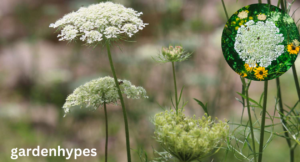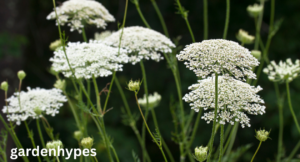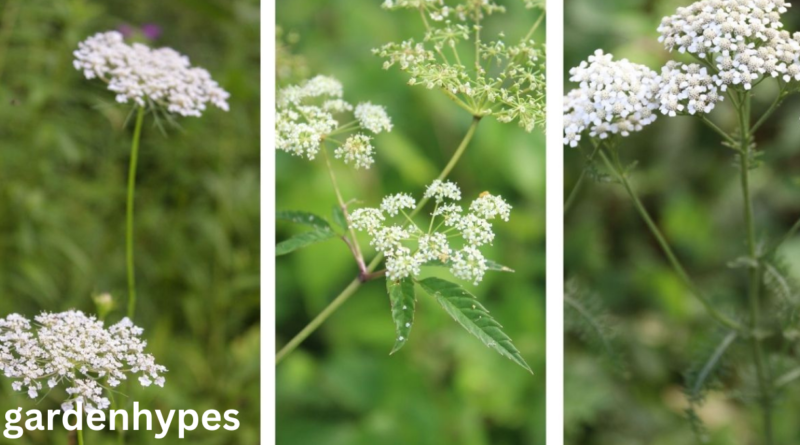Queen Anne’s Lace Look-Alike Identifying Similar Plants
Queen Anne’s Lace Look-Alike, also known as wild carrot (Daucus carota), is a beautiful wildflower that grows freely in fields, meadows, and along roadsides. Its delicate, lace-like white flowers make it an attractive sight, but this plant has a dangerous secret: it looks very similar to some of the deadliest plants in North America and Europe.
Many people confuse Queen Anne’s Lace with poisonous species such as poison hemlock or water hemlock. This confusion can be life-threatening because while Queen Anne’s Lace is generally safe and even edible in certain parts, its look-alikes are highly toxic. For foragers, herbalists, and gardeners, learning to tell these plants apart is not just a matter of curiosity—it’s a matter of safety.
click in link Tree Age Calculator
In this blog, we’ll dive into the key features of Queen Anne’s Lace, explore its most common look-alikes, and provide detailed comparisons to help you safely identify what you find in the wild.
Introduction to Queen Anne’s Lace
What is Queen Anne’s Lace?
Queen Anne’s Lace is the wild ancestor of the domesticated carrot. When you look at its root, you’ll notice it has a small, pale taproot that smells like a carrot. Above ground, its tall stems, finely divided leaves, and umbrella-shaped clusters of tiny white flowers give it its signature lace-like appearance.
This plant is a biennial, meaning it takes two years to complete its life cycle. In the first year, it grows leafy greens close to the ground, and in the second year, it sends up flowering stalks that bloom between late spring and summer.
Its Historical and Cultural Significance
Historically, Queen Anne’s Lace has been used for medicinal purposes. Its seeds were once used as a form of herbal birth control, while the plant itself was valued in folk medicine for aiding digestion and treating minor ailments. The name “Queen Anne’s Lace” comes from a legend that Queen Anne of England pricked her finger while making lace, and a drop of blood fell onto the flower—hence the tiny purple flower that sometimes appears in the center of its white blossom.
Because of its delicate beauty and cultural ties, many people admire Queen Anne’s Lace as a wildflower. However, admiration must always be paired with caution, given its deadly twins in the wild.
Why Identifying Queen Anne’s Lace Look-Alikes is Important
Medicinal and Herbal Uses
Queen Anne’s Lace is not only admired for its beauty but also for its herbal value. Its seeds have been used as a natural contraceptive in traditional medicine, while the root, resembling a carrot, has been eaten in small amounts. However, safe use requires precise identification, because even a small mistake could lead to accidental poisoning if a toxic look-alike is mistaken for it.
Potential Toxic Risks from Confusing Look-Alikes
This is where the problem lies—some of Queen Anne’s Lace’s closest relatives in the Apiaceae (carrot) family are among the most toxic plants on earth. Poison hemlock, for example, can kill a person if ingested, even in small amounts. Water hemlock, another look-alike, is so toxic that Native Americans once referred to it as the “suicide root.”
Even less deadly look-alikes, like wild parsnip and cow parsnip, can cause severe skin irritation and blistering when touched. That’s why knowing the differences between Queen Anne’s Lace and its imposters is crucial for anyone interested in wild foraging, gardening, or simply appreciating wildflowers safely.
click in link Tree Age Calculator

Key Features of Queen Anne’s Lace
Flower Structure and Color
The flower cluster of Queen Anne’s Lace is its most recognizable feature. It consists of tiny white flowers arranged in an umbel—a flat-topped, umbrella-like cluster. The flowers often have a single dark purple or red floret in the center, which acts as a key identifying feature. However, not every plant will have this purple dot, so it shouldn’t be the only characteristic to rely on.
Leaf Shape and Arrangement
Queen Anne’s Lace leaves are feathery, finely divided, and resemble carrot tops. They grow alternately along the stem and form a rosette in the plant’s first year of growth. Unlike some of its toxic look-alikes, its leaves are soft to the touch and have a carroty smell when crushed.
Root and Stem Characteristics
One of the safest ways to identify Queen Anne’s Lace is by examining its root. It has a thin, white to pale yellow taproot that smells strongly of carrots. Its stems are green, covered in fine hairs, and never have purple blotches—a feature that helps distinguish it from poison hemlock, which has smooth, purple-spotted stems.
Common Queen Anne’s Lace Look-Alikes
Poison Hemlock (Highly Toxic)
Poison hemlock is perhaps the most infamous look-alike of Queen Anne’s Lace. Unlike Queen Anne’s Lace, its stems are hairless and marked with purple blotches. The leaves are finely divided but lack the carroty smell. This plant is deadly if ingested, affecting the nervous system and leading to respiratory failure.
Water Hemlock (Extremely Dangerous)
Water hemlock is another deadly twin, considered one of the most poisonous plants in North America. It grows in wet areas like marshes and stream banks. Its roots contain a toxin that can cause seizures and death within hours of ingestion. Unlike Queen Anne’s Lace, its flowers often form more rounded clusters.
Cow Parsnip
Cow parsnip is much larger than Queen Anne’s Lace, with broad, coarse leaves and thicker stems. While not as deadly as hemlocks, its sap can cause severe skin burns when exposed to sunlight, a condition known as phytophotodermatitis.
Yarrow
Yarrow can sometimes be mistaken for Queen Anne’s Lace because of its white flowers. However, yarrow’s flower heads are smaller, and its leaves are more fern-like. Unlike hemlock, yarrow is non-toxic and even used in herbal remedies.

Wild Parsnip
Wild parsnip has yellow flowers instead of white, but inexperienced foragers may still confuse it with Queen Anne’s Lace before it blooms. Its sap can also cause painful burns when touched, making it another hazardous plant to handle.
click in link Tree Age Calculator
faqs
How can I quickly tell the difference between Queen Anne’s Lace and poison hemlock?
The fastest way is to check the stem. Queen Anne’s Lace has green, hairy stems, while poison hemlock has smooth stems with purple blotches. Another difference is smell—Queen Anne’s Lace has a carroty odor when crushed, but poison hemlock has a foul, musty smell.
FAQ 2: Is Queen Anne’s Lace edible?
Yes, parts of Queen Anne’s Lace are edible in moderation. Its root, when young, resembles a small carrot and can be eaten, and its seeds have been used in herbal medicine. However, extreme caution is needed, as confusing it with toxic look-alikes can be deadly.
FAQ 3: Can touching Queen Anne’s Lace cause skin irritation?
Generally, Queen Anne’s Lace itself does not cause skin burns. However, its look-alikes such as wild parsnip and cow parsnip contain sap that can cause severe rashes and blisters if exposed to sunlight. Always wear gloves when handling wild plants to stay safe.
FAQ 4: Why do some Queen Anne’s Lace flowers have a purple dot in the center?
The purple or dark red floret in the middle of the flower cluster is part of the plant’s natural design. According to legend, it represents a drop of Queen Anne’s blood after pricking her finger while sewing lace. While it can help in identification, not all Queen Anne’s Lace flowers have this dot.
FAQ 5: Where does Queen Anne’s Lace commonly grow?
Queen Anne’s Lace thrives in dry, open areas such as fields, meadows, and roadsides. It prefers well-drained soil and full sunlight. In contrast, water hemlock grows near wetlands and streams, which can be a useful clue in distinguishing between them.
